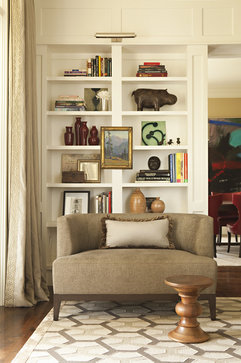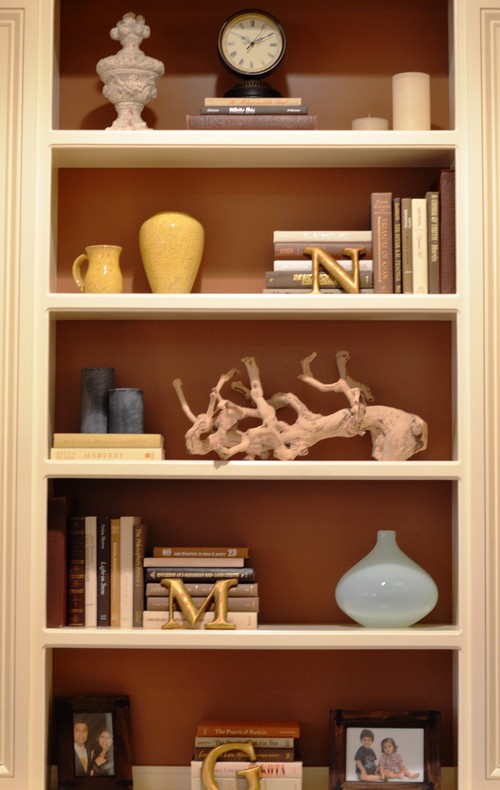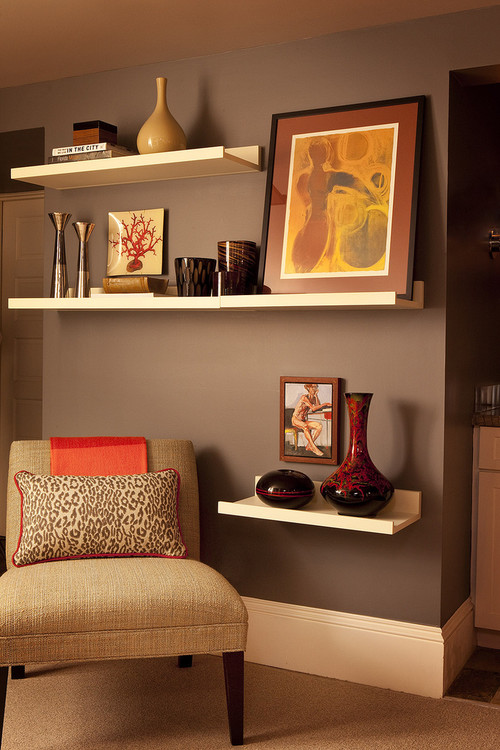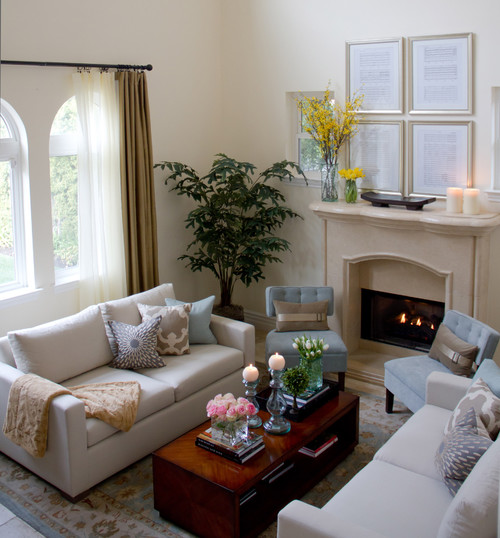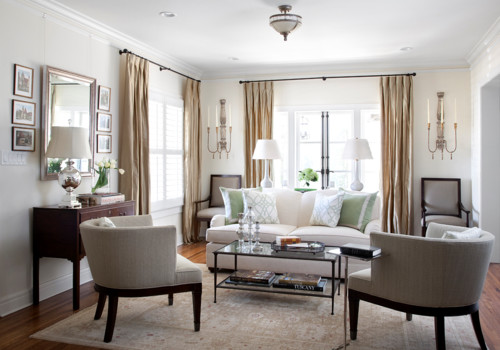Are your selves like mine? They start out beautifully arranged and over time bits and pieces of things end up store there, and soon you have a messy jumble. If you are someone who can relax in a space no matter what is going on in it, perhaps a jumble of objects doesn't bother you. I'm not like that. If my environment is in a mess that is how my head feels.
Here are 5 great tips to bring order to unruly shelves.
One of the simplest rules when arranging vignettes is to have a range of object sizes for variety. Some should be small , some medium and at least one piece that is large. And remember to layer to create interest. Put a tray at the back and then stack books and a small object on top of them. If you layer artwork make sure it is actually visible. There's nothing more annoying than using art work in a display and then covering it up.
Repetition, when used well, creates a strong design. Choose several elements to repeat throughout the bookcase/shelving. If you have one stack of books laid horizontally, repeat this arrangement in at least two other places. Use small sculptures, boxes or vases and rest them on top of a pile of books or magazines.

When you have a range of objects to store, one of the best ways to keep things looking pulled together is to choose neutral colour schemes. I love white objects for this purpose. You might also consider silver, brass, wood etc. There's a lot going on in the space above, but because everything is white or very pale, a cohesive look is achieved.
This neutral scheme allows the homeowner to display stored items in an interesting way. Also notice that the organization on each shelf is organized in two sets with both having equal visual weight.
Here are 5 great tips to bring order to unruly shelves.
Vary sizes of objects
One of the simplest rules when arranging vignettes is to have a range of object sizes for variety. Some should be small , some medium and at least one piece that is large. And remember to layer to create interest. Put a tray at the back and then stack books and a small object on top of them. If you layer artwork make sure it is actually visible. There's nothing more annoying than using art work in a display and then covering it up.
Use repetition
Keep it neutral

This neutral scheme allows the homeowner to display stored items in an interesting way. Also notice that the organization on each shelf is organized in two sets with both having equal visual weight.
This is as neutral as you can get in both theme and colour scheme.I love the repetition of bottles and books with variety achieved through shape.
Keep interesting elements at eye level
This is an easy one and it really makes a difference. When you walk into a room , you tend to see what is at eye level first. Don't forget about "seated" eye level too. Keep boring objects toward the bottom. Also remember that if you have a line of books or really dark objects they will have a lot of visual weight and should rest at the bottom of the display.
Create relationships

